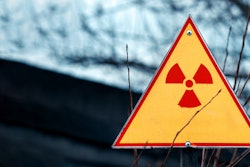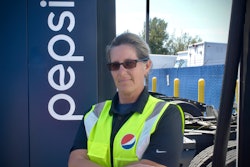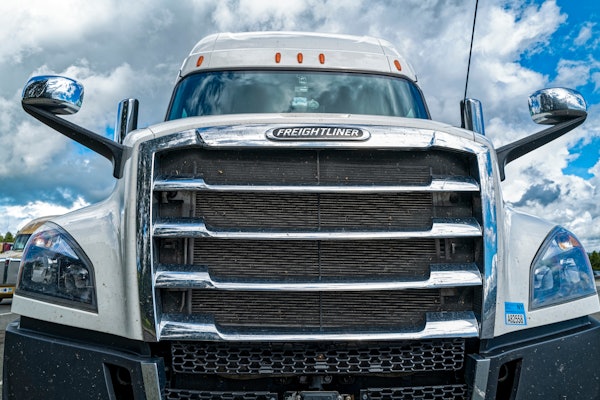California is leading the way in the push towards electric vehicles, but is the state ready? The American Transportation Research Institute (ATRI) has been conducting research on the challenges of electrification to provide data on what it will take to transition to electric vehicles.
In its latest analysis, ATRI looked at what would happen if, or when, California went to a fully electric vehicle fleet.
ATRI vice president Jeffrey Short joins us this week on the 10-44 to discuss the latest step in that research, which focuses solely on California and its readiness for an electric vehicle future.
[Related: Analysis: California not ready for its own EV mandates]
Contents of this video
00:00 10-44 intro
00:30 Advanced Clean Trucks and Advanced Clean Fleets regulations
01:12 Nationwide challenges for electrification
02:02 Electricity, resources, truck parking
02:54 California and its electric vehicle future
06:44 California’s largest power plants
09:26 Cost per mile for battery electric trucks in California
11:58 Battery weight and freight
Jason Cannon:
This week's 10-44 is brought to you by Chevron Delo 600 ADF ultra low ash diesel engine oil. It's time to kick some ash.
Matt Cole:
California is leading the way in the nation's push toward electric vehicles. But is the state ready?
Jason Cannon:
You're watching CCJ's 10-44. A weekly webisode that brings you the latest trucking industry news and updates from the editors of CCJ. Don't forget to subscribe and hit the bell for notifications so you'll never miss an installment of 10-44. Hey everybody. Welcome back. I'm Jason Cannon and my co-host on the other side is Matt Cole. California Air Resources Board over the last 12 to 13 months has made abundantly clear it wants to push fossil fuels out of transportation. That's what the introduction of its Advanced Clean Trucks and Advanced Clean Fleets Regulations, which require a transition to zero-emissions trucks.
Matt Cole:
The writing has been on the wall for a while that electric trucks are at least the next step in the move towards zero-emission trucks. Because of that, the American Transportation Research Institute has been conducting research to determine the challenges that lie ahead for electrification. ATRI Vice President Jeffrey Short joins us this week to talk about the latest step in that research, which focuses solely on California and its readiness for an electric vehicle future.
Jeffrey Short:
The previous work that we did on electrification was to pose the question, what happens if we electrify the entire United States? What does that require, and what are the challenges so we can get there? Not necessarily that we will get there, but what are those challenges if we're going to move forward towards that goal? And that's not to say that electric trucks are necessarily the right solution to decreasing CO2, it's not to say that electric trucks will actually work in a long-haul environment. It's just to say, what happened? How could we get to this point? So looking first at that report, we looked at electricity, how much electricity is going to be needed in the United States to replace the entire U.S. fleet. And then beyond that, how much lithium and other materials like cobalt, graphite, will be needed, nickel, will be needed to produce the batteries required for the whole U.S. fleet.
We're talking over 240 million vehicles in the United States that are registered. So that's a lot of those materials and it's a lot of power that's going to be needed for those materials. Then the third challenge we focused on was the parking issue in the United States, there's a serious truck parking problem in the U.S. Imagine putting enough chargers out there for all of these trucks, there aren't enough spaces. You'd have to put a charger at every truck parking space and then some, if these trucks are going to keep moving, up and down the highway and get charged during hours of service.
Jason Cannon:
In its latest analysis, ATRI looked at what would happen if or when California went to a fully electric vehicle fleet.
Jeffrey Short:
After we published the full report, we had a lot of folks saying, "All right, can you tell us what's going on in specific states?" And the one state that everyone wanted to know about of course, was California. They have the rules that are moving the trucking industry towards electrification. They have rules that the industry has to follow, and we wanted to say, all right, what would happen if California goes fully electric? What does that mean for the trucking industry and what does that mean for utilities in California? So just as background, we went and looked at how much electricity California uses. They are the fourth largest producer of electricity, it's a lot of electricity certainly, but they're also the top importer of electricity. So they're importing roughly, let's say about 20% of their electricity they're importing from other states and/or Mexico. So they don't produce, the state doesn't produce enough.
Now, that's not uncommon. Certainly states import. There's a state like Alabama, right next to where I live in Georgia, they export a tremendous amount of electricity. That's not a criticism of California. That's just saying 20% is coming from outside of the state, and they're going to have to ramp that up. They're going to have to ramp it up more than 50% to fulfill the needs. So overall, California's the second largest consumer of electricity at 247,000 GWh. So annually, I just will throw this note in also, annually the total consumption in Massachusetts is equal to the amount of electricity that California imports. So you just have to think of it in that perspective. Certainly Massachusetts isn't a large state, but it's a populous state. There are a lot of folks who live there and consume electricity. So then we looked at the goal is to achieve decreased CO2. How much of California's electricity is renewable versus non-renewable? So about two thirds is non-renewable. That doesn't mean it's associated with CO2, it's just non-renewable. And one third is solar and wind, which is considered renewable. 37% of the electricity that California consumes is from natural gas and 9% is from nuclear.
Matt Cole:
One major issue ATRI discovered in its research into California was the uncertain future for three of the state's largest power plants. We'll hear more from Jeffrey on that after a word from 10-44 sponsor Chevron Lubricants.
Jason Cannon:
Protecting your diesel engine and It's after treatment system has traditionally been a double-edged sword. The same engine oil that is so essential to protecting your engine's internal parts is also responsible for 90% of the ash that is clogging up your DPF and upping your fuel and maintenance costs. Outdated industry thinking still sees a trade off between engine and emission system protection, and Chevron was tired of it. So they spent a decade of R&D developing a no compromise formulation. Chevron lubricants developed a new ultra-low ash diesel engine oil that is specifically designed to combat DPF ash clogging. Delo 600 ADF with OmniMax technology cuts sulfate ash by a whopping 60%, which reduces the rate of DPF clogging and extends DPF service life by two and a half times. And just think what you can do with all the MPGs you're going to add from cutting your number of regions. But Delo 600 ADF isn't just about after treatment, it provides complete protection extending drain intervals by preventing oil breakdown. Before you had to choose between protecting your engine or your after treatment system. And now you don't. 600 ADF from Delo with OmniMax technology, it's time to kick some ash.
Jeffrey Short:
So we went and looked at the top sources of electricity. There are a lot of utilities, there are a lot of power plants in California but we found three that are really critical to the infrastructure. I can touch on at least one of them is the Diablo Canyon nuclear power plant that produces about 8% of the in-state electricity for the state of California. And folks have been wanting, well really when you look back at it, folks didn't even want this nuclear power plant to be put there in the first place. And there were lots of protests 40 something years ago. But now there are folks saying, well, this nuclear power plant isn't necessarily safe. There were plans to decommission the power plant. And that is all kind of up in the air, I won't say anything's for certain, but the state now recognizes that this nuclear power plant, if it's shut down, there's a huge gap in their electrification goals and the electricity needed for their electrification goals.
So the plant has been approved to close down by the end of 2025, but the state has since moved to keep it open. They want it open longer, and there are certainly environmental groups, like I mentioned, who say it's absolutely unsafe to keep this power plant going. So that's just one of the issues out there. The second largest power plant that I will say is controlled by entities in the state of California, because it isn't actually in the state of California, but it doesn't count as an import, is the Intermountain Power Project. So this is a coal burning power plant that is controlled by the city of Los Angeles Department of Water and Power, and it's in Utah. It's not even in California, which I find interesting, but it's also a coal burning power plant, and they are shutting that down. They're replacing it with a much smaller natural gas power plant.
But again, that's the second largest, and if you cut the amount of electricity coming from it in half, that brings up a lot of questions. And can you do this at a time when the state, I mean, is trying to increase the amount of electricity through electrification by what we estimate would be about over 50%. They would need 50% more than what is consumed now to take all of the vehicles in California, which is a lot of vehicles, it's thirty-one million vehicles they have the most vehicles of any state, to take those and electrify them. That's 50% more electricity. So are things all going in the same direction? That's a question we pose here with this data.
Jason Cannon:
A big problem for the trucking industry that ATRI identified was that the cost per mile to operate a battery electric truck in California could be nearly double that of its diesel counterparts.
Jeffrey Short:
The first issue is the actual truck. These trucks are costing roughly two to three times more, let's say over $400,000. Whereas a diesel truck that I wouldn't call it equivalent because it doesn't have the same distance, same range I mean, would be in the 150 range. That is certainly a cost. But we also looked at the breakeven cost for the electric infrastructure. And when you add in the cost of electricity in California to the cost of chargers, maintaining them, putting in all of the necessary infrastructure for utilities, we found it could cost as high as $1.21 per mile. That's nearly double the cost per mile of diesel fuel. That's certainly a concern. And when you look at, just to put things in perspective, the cost of electricity in California versus the rest of the U.S., certainly there are places where the average cost is under 10 cents.
Wyoming comes to mind. But then you look at the average, the U.S. average, it's about 12 cents, a little more than 12 cents per kilowatt-hour. That's the full U.S. average. When you look at California specifically, it's got the second highest average, first highest average in the continental U.S. Hawaii has more expensive electricity, which kind of makes sense, but California's electricity is almost double the U.S. average at about twenty-two and a third cents per kilowatt-hour. But then you go into the urban areas where a lot of port trucking activity occurs. You see Los Angeles at 28 cents, San Francisco 35 cents per kilowatt-hour, and San Diego's average is 47 cents per kilowatt-hour. So a lot of the thinking out there, or a lot of what you read out there is that, well it's cheaper than diesel, the electricity is cheaper than diesel, and certainly per kilowatt-hour it is. But there are all these costs that go into it. Chargers need to be maintained. We've definitely learned that with car chargers. There's study after study finding difficulties, massive difficulties with car chargers that they just don't work. They won't charge a car, they won't take a credit card. So there are going to have to be people dedicated to maintaining these, especially one that's got enough electricity going through it to power a truck.
Matt Cole:
Another problem the trucking industry will run into, ATRI found, is that the heavier weight of battery electric trucks means more trucks will be required to move the same amount of freight.
Jeffrey Short:
We looked at, again, at our operational cost of trucking data like we did with the average diesel cost per mile. And we said, how many of the trucks in our operational cost of trucking data set, which represents hundreds of companies, how many of those trucks are weighing out before they're cubing out? So what we're getting to when we say that is battery electric truck could weigh as much as 30,000 pounds. Whereas today's traditional diesel truck might weigh closer to 18, 19,000 pounds for a sleeper cab. So that's about 13,000 extra pounds that the truck's going to weigh. There's a 2000 pound exception there, but still you're going to need more trucks to move the same amount of freight. So when we applied the number of trucks moving fully loaded, and we looked at how many diesel trucks it would take versus how many electric trucks it would take, we found that it would take 343 extra trucks for every 1000 trucks. So roughly 30%, 34% more trucks would be needed to haul the same amount of freight. So that of course comes with cost, cost of the truck, plus the electricity, and you have to add in that extra electricity that we haven't necessarily accounted for. So that could drive up demand even further.
Jason Cannon:
That's it for this week's 10-44. You can read more on ccjdigital.com, while you're there sign up for our newsletter and stay up to date on the latest in trucking industry news and trends. If you have any questions or feedback, please let us know in the comments below. Don't forget to subscribe and hit the bell for notifications so you can catch us again next week.










